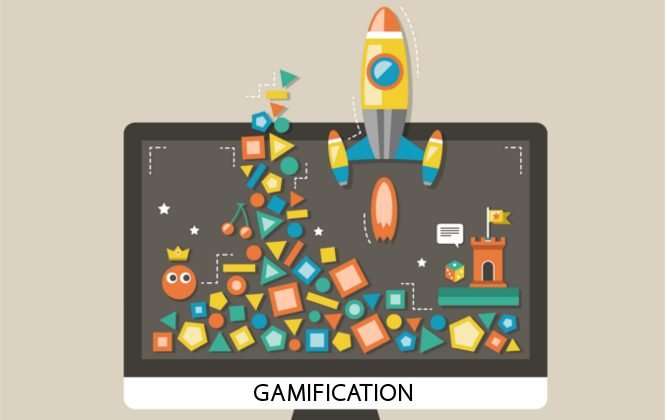Knowing how gamification can transform our business will help us on our path to success. It will also help us get the most of the benefits that new methodologies bring to find the most efficient results. Today, we tell you about four transformations gathered together by Gamification Buyer’s Guide, created by Technology Advice.
1. Generates commitment or engagement
The key word when we talk about gamification in business is engagement, i.e. commitment. Achieving the full commitment of employees is difficult, partly because many of them do not identify with the culture of their company and sometimes they do not find their daily work appealing. Consequently, they feel detached from the common project. How to inspire them?
A Call-Center company based in Dallas (USA) decided to implement Snowfly, a gamified tool to encourage customer service workers. These departments play an important role in the way customers perceive a brand, but their teams are often unmotivated or unproductive.
To address this problem, typical in call center or help-desk companies, Snowfly focused on encouraging workers with gaming elements that stimulated their engagement. Three months later, both performance and quality levels of phone calls had increased.
Achieving employee engagement positively affects the productivity of the entire organization, because a motivated worker does not think negatively about their work, and ends up getting involved in the achievement of common goals.
2. Motivates and develops your employees
By using gamification in business, we can make the most of the positive aspects of games: entertainment is guaranteed in a playful atmosphere, while organizations can find a solution to their needs.
There are many companies that have obtained very positive results with the practice of gamified techniques for staff training: IBM, Deloitte and NBC are examples of companies that have used gamification in their marketing campaigns or in the workplace.
More and more organizations are committed to gamification in business and the use of techniques based on the game in order to recruit, motivate and develop their employees. This is the case of eBay, the e-commerce giant, which has a good reputation among its employees as one of the best workplaces in the United States.
What did eBay do? Optimize its recruitment process with the help of MindTickle, an e-learning gamification platform. Thus, candidates could learn more about the way the company works and interact with their peers even before joining the staff, all of it without taking up 100% of the time of Human Resources employees.
The system had game elements such as progress or rewards, which helped participants to familiarize themselves with the content of their jobs.
3. Develops customer loyalty
One of the cases of success shown by the Technology Advance’s report in its Gamification Buyer’s Guide is that of the company Heineken. This large corporation, sponsor of the Champions League – the most important soccer competition in the world, with more than 700 million viewers per year – used its time on screen to launch a gamified campaign that would attract new users.
The project conceived by Heineken and the advertising agency they worked with consisted on getting viewers involved in what was happening in the matches, through a multi-platform named Star Player.
You may be interested: 8 Benefits of Gamifying your Company
The audience played by guessing what would happen during the match, earning points and being part of a league system. Heineken’s presence on social networks increased by a 78% as a result of the initiative, which highlighted the great success of implementing gamified actions for fidelity.
4. Encourages behaviors
The other great strength guaranteed by gamification, besides engagement, is its ability to encourage behaviors. Through the use of gaming techniques, we can encourage behavioral change among our employees.
Consider, for example, a sales team. The sales staff is motivated and competitive by nature; it is therefore possible that engagement will not be the main need for this group, but we will need to change their behaviors so as to generate more sales.
Through gamification in business, we may try to encourage certain actions. To change the behavior of its sales team, the consulting firm Aberdeen Group implemented FantasySalesTeam. Basically, it was about dividing salespeople in different teams.
Thanks to challenge and competition, employees became increasingly aware of what their coworkers were doing, and collaboration among them increased.
It is no wonder, then, that gamification providers have proliferated. Many companies are using the game in business like these 10 groundbreaking gamification examples.
The business network is realizing this growth and that is the reason why the gamified training sector is experiencing a meteoric growth.





